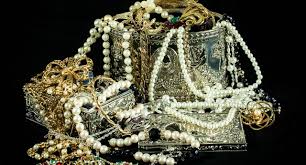Heirlooms are more than just physical objects – they hold within them a wealth of memories, love, and family history that cannot be measured by their material worth. These treasured items, passed down through generations, act as a bridge between the past and present, carrying with them stories that define our heritage and personal identity. But why do heirlooms evoke such deep emotional value, and why do they mean more than the wealth they could represent?
A Tangible Link to Our Past
An heirloom is often imbued with memories of those who came before us. A grandparent’s watch, a mother’s wedding ring, or even a beautifully crafted music jewellery box can hold layers of meaning that go beyond their physical appearance. These objects are tangible connections to family members who may no longer be with us, and they often evoke vivid memories of shared experiences.
For many, holding onto an heirloom is a way to keep the spirit of a loved one alive. The touch, smell, or sound of the object can bring back a flood of memories, transporting us back to the moments when these items were first gifted, used, or cherished. In a world where time moves so quickly, heirlooms act as anchors, allowing us to stay connected to our roots.
The Stories Behind the Objects
Heirlooms are rarely just handed down without a story; it’s often the tale behind the object that gives it its emotional weight. Perhaps a great-grandfather gifted a pocket watch to his son when he turned 21, or a music box was given to celebrate a special anniversary. These stories turn everyday items into symbols of love, accomplishment, or even survival.
By sharing these stories with the next generation, we pass on not just objects but also the values and lessons of those who came before. It’s a way to keep family history alive, ensuring that the achievements, hardships, and joys of past generations are remembered.
A Sense of Identity and Belonging
In an increasingly digital world, where so much of our daily lives exists in intangible formats, heirlooms offer a sense of permanence. They are physical, real, and enduring – qualities that can provide comfort in times of change or uncertainty. When we hold an heirloom, we are reminded that we are part of something bigger than ourselves – a family, a lineage, or even a cultural tradition.
For many, heirlooms offer a sense of belonging. They can remind us of where we came from, the sacrifices made by previous generations, and the values that shaped our family. This is especially important for those who may feel disconnected from their heritage or family history.
More Than Just a Material Item
While some heirlooms may hold significant financial value, their emotional worth often far exceeds their monetary price. A hand-knitted quilt made by a grandmother may be priceless in the eyes of her grandchildren, even if it holds little material value to the outside world. Likewise, a delicate piece like a music jewellery box, intricately crafted and filled with memories, may evoke deep feelings of nostalgia and sentimentality, far outweighing any financial consideration.
This is why heirlooms are often kept in families for generations – they are not seen as items to be sold or traded, but as sacred keepsakes that preserve a family’s essence. The sentimental value attached to them cannot be replicated by a new purchase, no matter how luxurious.
Passing Down More Than Wealth
When we think of inheritance, it’s easy to focus on financial wealth. However, the passing down of heirlooms signifies the transfer of emotional wealth, which can be far more enriching. Heirlooms often come with the responsibility of care and preservation. In many cases, they serve as a reminder of the trust that family members place in one another to protect these precious items for future generations.
When you inherit an heirloom, you are not just receiving an object – you are being entrusted with a piece of family history, with all the love, pride, and emotion that comes with it. This responsibility to care for and eventually pass on the heirloom creates a bond between generations, ensuring that the stories and values they represent continue to endure.
Creating New Heirlooms
While heirlooms are typically thought of as items from the past, it’s also possible to create new heirlooms for future generations. A gift given today, such as a personalised piece of jewellery or a music jewellery box, can become tomorrow’s cherished keepsake, passed down with its own set of stories and memories.
In choosing or creating an heirloom, the intention behind the object is what often matters most. It’s not just about finding something beautiful or valuable, but about selecting something that holds meaning and significance – something that future generations will appreciate not just for its aesthetic or material worth but for the memories and stories it holds.
Read More: The Impact of Social Media on Women’s Fashion Trends
